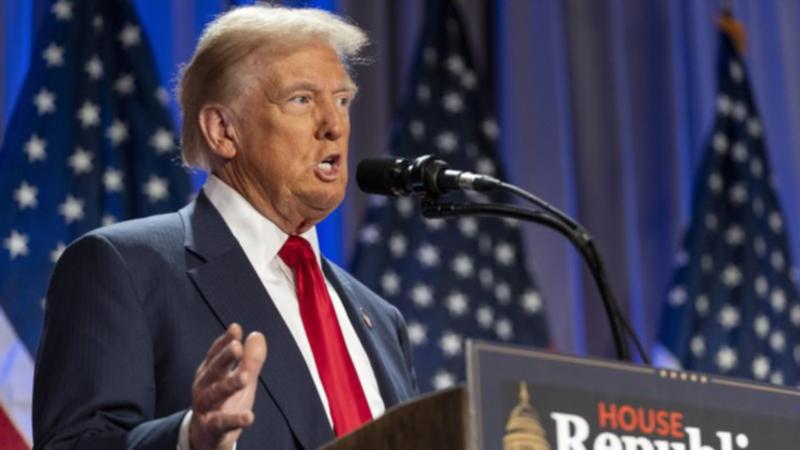THE WASHINGTON POST: Can Trump impose tariffs without Congress? His proposals, explained.

President-elect Donald Trump promised Monday to enact new tariffs on all imported goods from China, Mexico and Canada — America’s three largest trading partners.
The incoming president said the moves would come on Inauguration Day through executive order, cementing a longtime campaign promise that threatens to roil global trade and raise prices on American consumers.
Mr Trump said the taxes would remain in place until “Drugs, in particular Fentanyl, and all Illegal Aliens stop this Invasion of our Country!”
Sign up to The Nightly's newsletters.
Get the first look at the digital newspaper, curated daily stories and breaking headlines delivered to your inbox.
By continuing you agree to our Terms and Privacy Policy.The facts
Trump announced tariffs of 25 percent on Mexican and Canadian goods. Chinese goods would face a 10 per cent levy.
Those tariffs would affect roughly $1.5 trillion worth of goods moving through North America, plus about $600 billion in trade between the United States and China.
It is unclear what precise effect these policies would have on Americans’ pocketbooks. But economists warn that prices could go up for basics like groceries, cars and electronics.
What would the tariffs affect?
Once enacted, the tariffs would affect huge swaths of global trade.
Mexico is the United States’ top trading partner. Most goods exported here from Mexico last year were manufactured goods, including cars, machinery and electrical equipment. Mexico also supplied more than half of US fresh fruit imports in 2022, according to the Agriculture Department.
Canada supplies crude oil and petroleum, along with machinery and parts. The United States also imports plastics, pharmaceuticals, lumber and agricultural products.
Imports from China include electronics like phones and computers, sporting equipment, plastics and furniture.
Can Trump act unilaterally?
In his social media posts Monday, Trump said that he would enact the tariffs “as one of my many first Executive Orders” and that he would sign “all necessary documents” to make it happen.
Legally, he could have an open door to act unilaterally.
Laws passed over the past few decades give presidents plenty of authority on tariffs, especially when it comes to protecting industries harmed by global trade. But it’s unclear whether blanket tariffs on all foreign goods would hold up.
Still, Trump has made far-reaching tariffs fundamental to his agenda since his first term, along with lower taxes, increased energy production and deregulation.
What happened last time?
Trump employed tariffs frequently during his first term, targeting imports from China, Mexico, Canada and the European Union. Over that time, the overall trade deficit widened, from $792.4 billion in 2017 to $901.5 billion in 2020, according to the Census Bureau.
Still, back then, Trump’s rhetoric and promises around tariffs didn’t always translate into specific policy. Sometimes threats spurred by immigration disputes or other economic issues never materialised or were delayed indefinitely, as happened with a final round of tariffs on Chinese goods after a partial trade deal was reached with Beijing in 2019. Other proposed tariffs were announced haphazardly and without much detail.
What about USMCA?
Some experts already argue that the tariffs would violate existing trade agreements, namely the United States-Mexico-Canada Agreement, which took effect in 2020 after Trump negotiated it. Goods moving between those three nations can cross borders duty-free. Massive tariffs implemented through executive action would sidestep that agreement.
Mexico and Canada have vowed to retaliate: Mexican President Claudia Sheinbaum said her country would impose its own tariffs if Trump moved forward. Mexico’s top exporters included US-based automakers General Motors and Ford Motor Company, which have built sprawling modern production facilities around the country.
In a joint statement following Trump’s posts, Canadian Deputy Prime Minister Chrystia Freeland and Public Safety Minister Dominic LeBlanc said the relationship between the United States and Canada was “balanced and mutually beneficial.”
The head of Quebec, one of Canada’s largest provinces, said the decision “poses an enormous risk” to Canada’s economy, and pressure mounted on Prime Minister Justin Trudeau to cushion the impacts for the country’s workers.
David Lynch, Jeff Stein, Niha Masih and Mary Beth Sheridan contributed to this report.
© 2024 , The Washington Post
